The 50 States Project is a series of candid conversations with interior designers across the country about how they’ve built their businesses. This week, McLean, Virginia–based designer Tracy Morris tells us how a Swiss aristocrat kicked her business off with a bang, the best lesson she learned from her mentor, and how she gives her junior staff hands-on experience.
When did you realize that you wanted to be a designer?
My uncle was an architect and my aunt was an interior designer, and they were flipping houses in Baltimore when I was a child before flipping was a thing—before it was a TV show. From when I was 5 or 6 years old, I would hang cabinets with them, scrub aggregate, stain floors, paint walls, and I fell in love with construction. I carried that through my teenage years.
It was my mother who did not want me to do design. She said I would never be able to make a living—she was very worried and really wanted me to be an accountant. So I studied design in school, but I actually have a business communication degree. I had to hide my design classes from her. She knew I was taking design classes as electives, but she didn’t know I had three-quarters of a design degree.
So what your mom didn’t know was that all of your electives were design classes.
Exactly. When I graduated, I worked for a large hotel chain planning events, and I hated it. It was very structured and not any type of culture I wanted to be in. By the time I was 25, I was working as a technical recruiter for a large D.C.–based consultancy, and I got fired. The boss that I was working for asked me to do something illegal, I wouldn’t do it, so she fired me in April of 2003.
Meanwhile, all through college and my first couple of years out of school, people would ask me to come help them pick out their paint colors and hang their pictures. For whatever reason, that followed me wherever I was. In the beginning, I would do it for free or for $25 an hour. By the time I had that job in D.C., I was doing it for $65 an hour. And for me, it always felt like I had won the lottery. So I got laid off in April, and then I was published for the first time that August. In that moment, it was either do it or don’t—so I did it.
What got published?
I was working on a dear friend’s home—I had been her babysitter, and she let me do her living room, large den and dining room. I had a faux painter I was working with at the time because it was the early 2000s. When we were done, the friend said, “You know what? I really love this project. I’m going to pitch this to Sharon Dan at Home & Design.” And Sharon picked it up for her editorial section. I still have it hanging on my wall.
And that’s when you officially decided to go for it?
You got it. That’s when Tracy Morris Design was born.
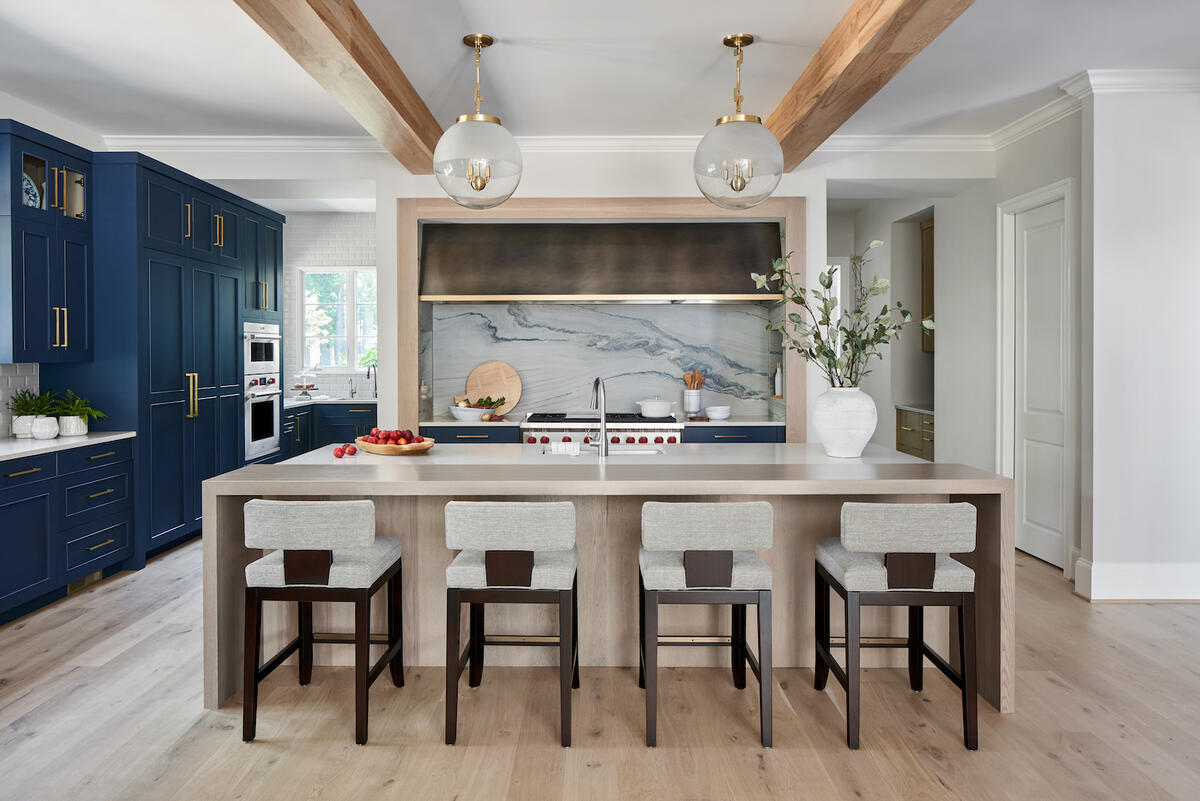
What did your business look like in the early days?
It was me in my town house, working out of a guest bedroom. I was 25. Fast-forward three years, and I ended up meeting a client who was [a member of the] Swiss aristocracy. She found me through her dear friend’s contractor—you cannot make this stuff up! I don’t know what she saw in me, but she had bought a home in Florida that needed major construction. I was based in Fairfax, Virginia, at the time, but she asked me, “Can you come to Florida for one month to help me with my house?” And one month turned into three and a half years and four homes.
Were you living in Florida, or were you going back and forth?
I was going back and forth—it was three weeks in Florida, one week at home. And we flew all over the world. She took me to Paris and Amsterdam; I did a place for her in Switzerland. It is kind of unbelievable if I look back on it. You’re going to laugh at this, but I didn’t even have a fabric account—I was still using our local Fairfax design center, which was one building that had an account for Kravet that I could source from. So we would go to DCOTA [Design Center of the Americas in Dania Beach, Florida] and I would say to the client, “Oh, my gosh, look at that fabric. That is so beautiful. See if you can find it in the colorway you like.” And then I would walk over to the sales rep—many of whom I still know to this day—and I would say, “Please don’t out me. This is what we’ve got going on.” There was no scanning anything, so I’d say, “I will fax this back to you—but I promise you, it will be worth your while. I am going to buy things.” I lived with the client, and we would work all day—going shopping, working on floor plans. And then I would stay up pretty much all night filling out account forms.
And by the way, the house was 18,000 square feet, which was no joke for somebody who was brand-new. She had moved in with a 54-foot tractor trailer of furniture from her house in Georgetown, and the house still looked empty.
Was she your only client during those three years?
She was not. I would take color consultations, smaller projects like furnishing somebody’s living room, maybe somebody needed a coffee table or wallpaper for a bathroom. My other jobs were super tiny, but I always knew I needed to keep the pipeline going.
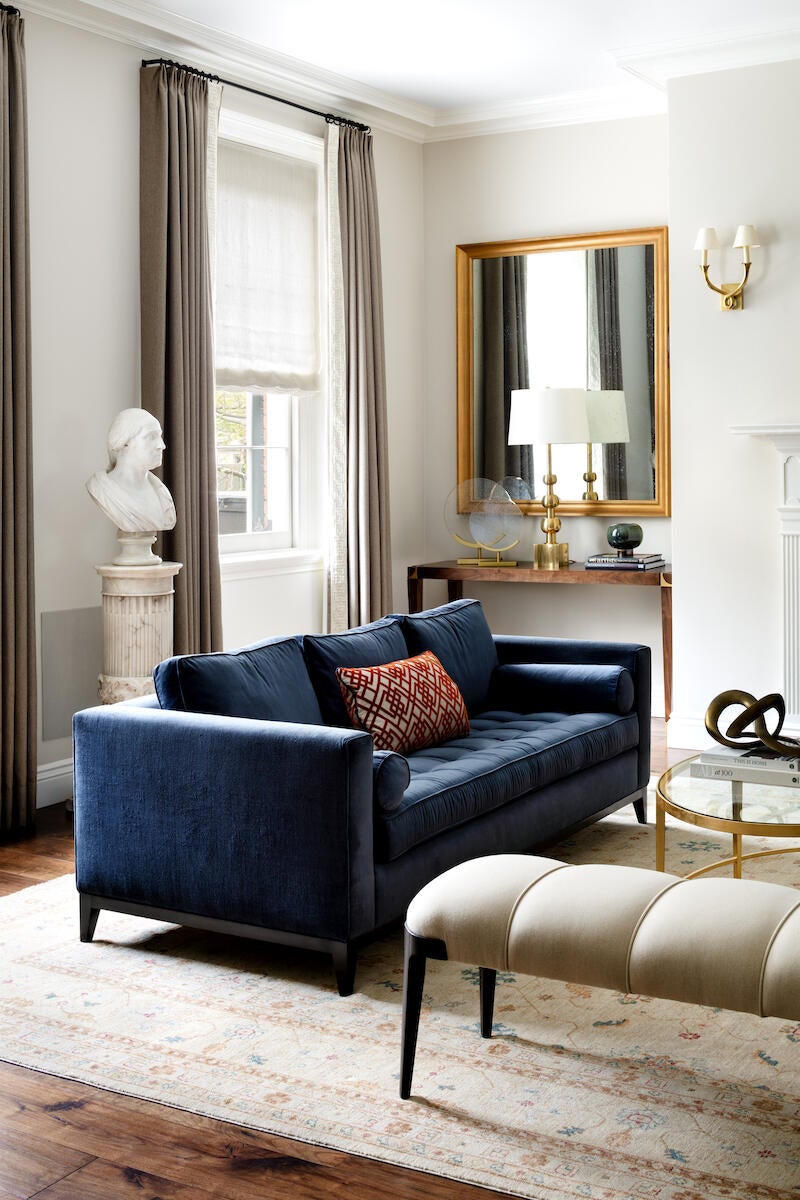

What changed when you finished the Florida house?
My confidence, that’s what changed. [That experience] was an MBA in design. Her taste level, her sense of style and her European aesthetic—I could not have gotten that in design school. And the first house she had, she asked me to basically demolish the entire thing. So here I am at 28 years old, and I had to put together an entire construction team: contractors, AV, everybody. I didn’t know a damn soul down there. So I had to find all these people, interview all these people, make sure that they weren’t showing up drunk—it was the standard stuff you’re dealing with on construction sites, like making sure these people are licensed, bonded. I would stay up all night to get those things together. I got that first house to a point where we were getting ready to do some of the interior features, and she decided she didn’t want to keep it. She ended up selling it, and then we worked on a bigger house across the road.
Was it profitable? Had you figured out how to charge in a way that made sense for you as a business?
It certainly was. Of course, I have since fine-tuned all of that over the past 20 years, but I was able to make a strong profit on that particular job. My father is an estate planner and a CPA, so I grew up with spreadsheets. For this project, everything was spreadsheeted and categorized by room, dollar amounts, my net cost, the retail cost, what I had in the bank account. She would just wire me $100,000 and say, “OK, that’s our retainer for now. Just tell me how much I have left.”
How did your business evolve?
I finished those projects and moved back to D.C. when I was 30 and started taking on more regular jobs—you know, “Let’s redo my first floor,” or “Let’s do my kitchen.” When I found that I didn’t have time to run and pick up all of the materials samples that had been selected, I realized I needed an intern and I brought somebody on board as a trial.
What did that change for you?
It freed up brain space. It allowed me to have a little bit more creative freedom because you lose that creativity when you get bogged down in all of the admin stuff.
How did you prioritize who you needed to hire from there?
The design industry is very standardized in a lot of ways. I know that sounds strange, but you’ve got one person who’s rainmaking—bringing in the business. You have another person who is helping you with sourcing estimates. You have another person doing tracking, checking on where the items are that have been purchased. And then you have somebody doing the floor plans and CAD. In my mind, those were going to be the roles that I needed to fill. And as life moved on, that first person that I actually hired full-time handled all of that. We didn’t have that many projects—I maybe had 10 going at a time, whereas now we have 37.
Because I handle construction, I’m typically with the clients for four to five years, starting from when they purchase their land, and I put together the teams. Typically, they’ll call me and say, “I have a flat piece of land, what are we going to do with this? Who do you recommend?” I bring in the architect, the landscaper, the contractor—and at this point, I know what team is going to work for that particular client.
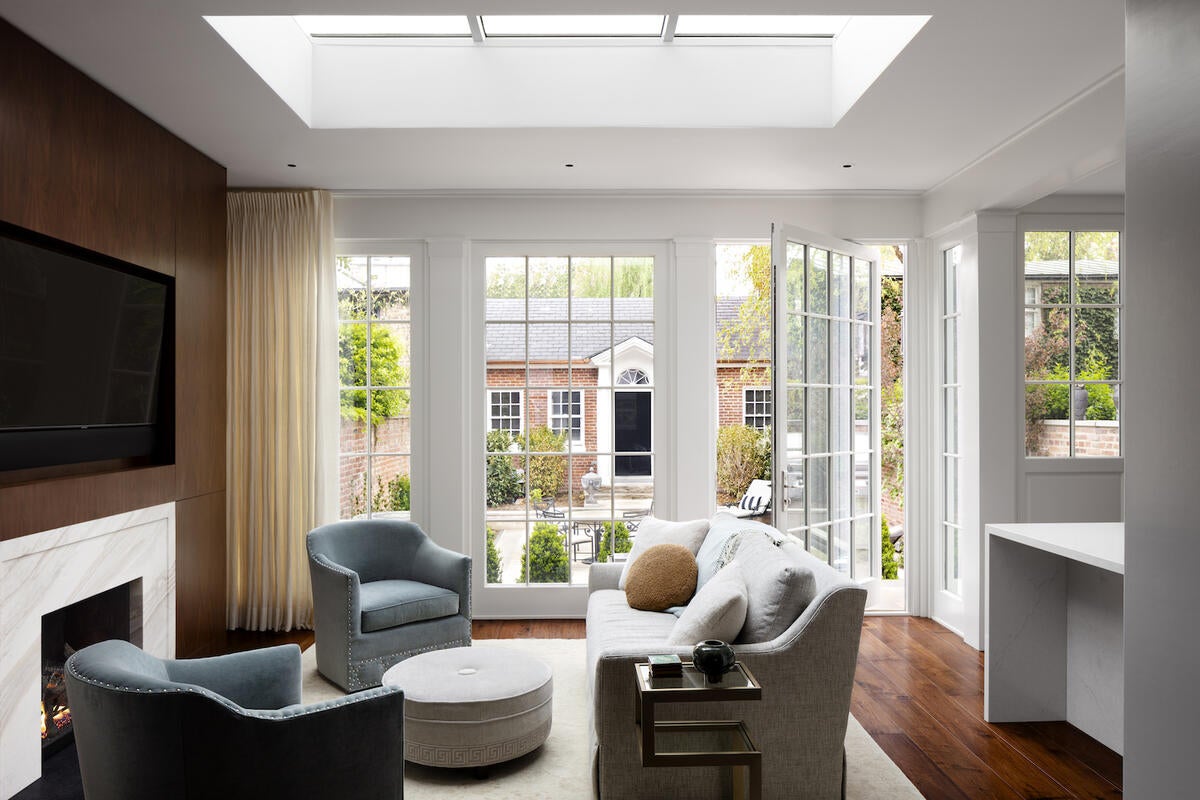
You have 37 active projects today. How many people does it take to oversee that amount of work?
We have six people. I am in the weeds every day!
That was actually my next question: Where does the client see you?
We discuss that ahead of time. If it’s a high-level job—you know, $20 million-plus, where we’re handling major construction—they’re dealing with me. I am interfacing with the client, the contractors, the house managers, the management companies. When you get into the actual designing, that is when I turn a lot of the day-to-day work over to Maha Hartary, my senior designer, and one of the associate designers who handles CAD. I sit down with them and talk about what I’m seeing for the space, and then they go to work. They’ll bring it back to me and we talk it through, and then I’ll often have Maha and the associate designer present that concept to the clients. Or sometimes the clients have requested me, and in those instances I will present to the client, but I will bring Maha with me because she’s got all the backups and knows the pricing. Once the client has made their selections, I hand it back to the team and Maha distributes the work among the associate designers, who order and then track all of the items and keep the client abreast of when their items are going to be delivered.
Are you back on-site for installation?
To be honest, I’m a nightmare at installations. I’ll see stuff come in, and because I may not have picked the final color of a lamp, I will stand there and go, “This isn’t what we ordered.” I mean, I’ll admit it, I’m a nightmare. And so the team has told me, “We don’t want to see you until all of the furniture is in,” and I have absolutely acquiesced to that. Now, I will take over the client gift.
Was it challenging to not be the person making every selection as your firm grew?
That is the most intense and hardest part. I really struggled, and to be honest with you, there are some days I still struggle. But I’ve gotten a lot better. My father always told me that you should hire people who are 10 times smarter than you, and that’s what I’ve done—I feel very, very blessed to have the team of ladies that I get to work with on a daily basis, and as a result of that, I really trust them


What are you looking for in a new hire?
Attitude and work ethic are number one. Are you willing to put in the grit and do what it takes? The design industry is not glamorous—there are moments of glamour, but I am scrubbing floors, moving furniture, packing boxes and getting completely dirty and covered in mud more days than I am looking at all attractive. But I chose that, you know? I love construction. And that’s what I’m looking for: somebody who is willing to get in the trenches with me.
Look, hiring is hard. I have talked to so many prima donnas who wanted to start at ridiculous places. I have had people interview from bed—literally interviewed via FaceTime in their bed—or while they were in a Starbucks, and they were ordering coffee. I am so blessed that my team are all hardworking, smart, sharp-as-tacks ladies with common sense. And in turn, I treat them like family. They are part of my family, without question.
What does that require of you as a business owner?
My feeling is that the key to retaining people is that Maya Angelou quote [about how people will forget what you say and do, but won’t forget how you make them feel]. You have to make people feel not only that they’re heard, but that they matter. The other day, I heard one of my team members saying, “I feel really overwhelmed.” OK, what can I do to change that for you? And as we dug through it, we realized within 10 minutes that the poor girl needed a new laptop, but she didn’t want to ask me for it because of course I’m always looking at the bottom line of our finances. She said, “I didn’t want to bring it up but would it be possible?” And I said, “Done.” Then I talked to the whole team, and it turns out everybody needs a new laptop, so we’re going to get new laptops. Let’s make their tech the best that I can get them. It’s those types of things—the things that are irritants on a daily basis.
Another example: Some of our team members live a little bit farther from my office, so they’re able to shift their schedules. If you want to do 9:30 to 5:30, fine. If you want to avoid traffic, that’s great too. One of the gals in my office gets stuck in traffic a lot, so I got her an E-ZPass and I pay for it. An old business mentor told me a long time ago that if you can keep your employees working happily and productively, that is money that is constantly in your pocket. He said, “I would rather see you pay for all of those day-to-day things.” Think about it: If your employee is stuck in traffic for an hour each way, that’s $285 that you’re losing on them every day. Instead, pay $500 a month for an E-ZPass, and let them come to work happy and in a good mood. Or if you know that traffic is going to be bad, call an Uber and get work done in the car—you can bill in the car, but you can’t bill in traffic. That has always stuck with me.
I also do spot bonuses. If somebody’s done a phenomenal installation, I will throw in $250 or $500 and say, “Go enjoy the weekend.” The nice part about my team is that it’s not expected, but they know that I am going to take care of them. I worked at enough jobs before I started the business where I remember people being harsh. You know, “Can I go to the doctor?” “No.” And I thought to myself, ‘If I ever have a company, I’m never running it this way.’ So I just try to be cognizant about the issues that are going on with them on a daily basis. In my mind, that’s what retains people.
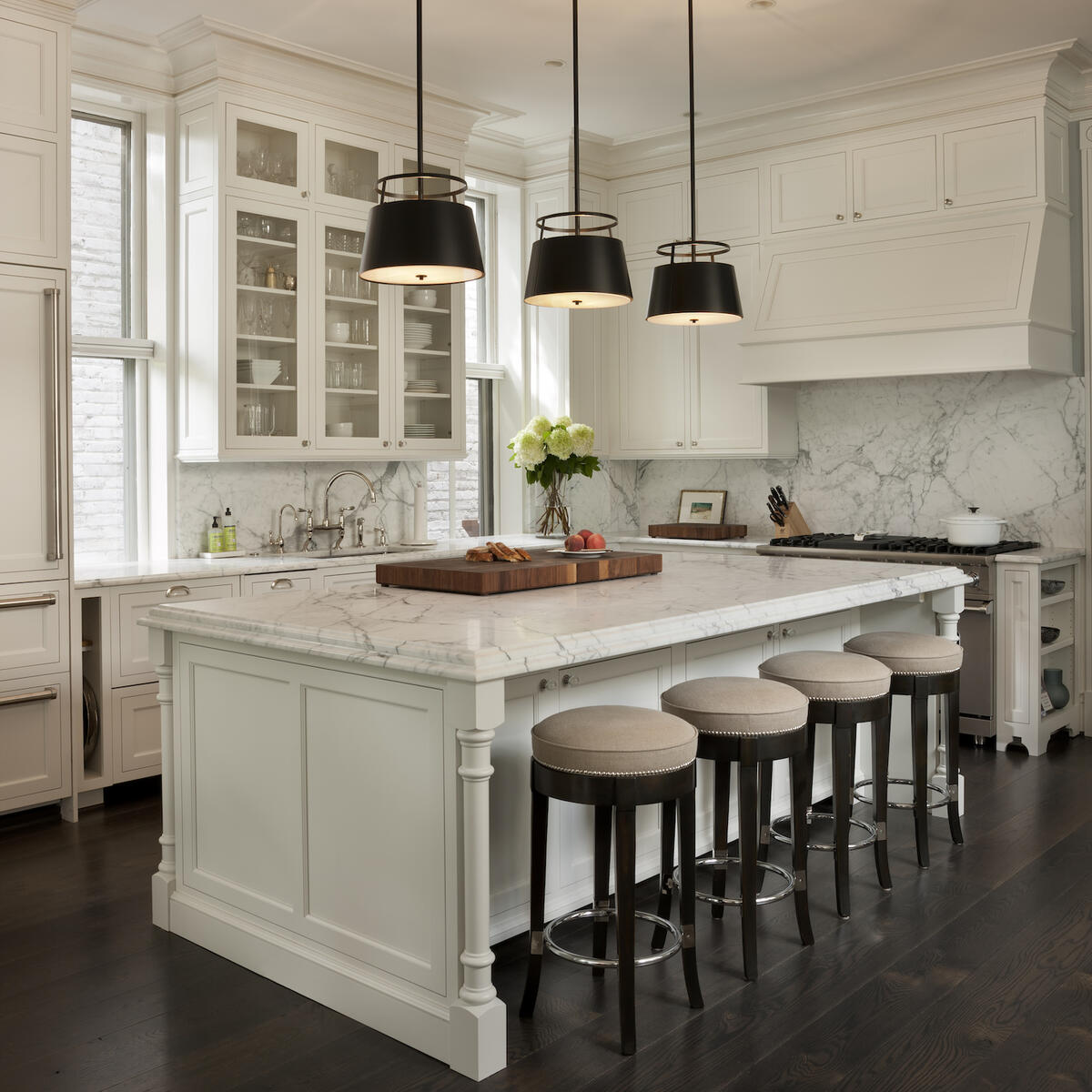
It would not be the 50 States Project if I did not ask you about Virginia. Can you tell me about the design scene?
I think Virginia is a very underrated state. We have such beautiful mountains, hills and rolling plains, but it’s also a metropolis—we live six miles from D.C. I am very fortunate to have projects that have land, so it’s not just the building of the house. We also get to deal with beautiful greenhouses, homes on the water, and incredible landscapes with pools and pool houses. The average house size for us is typically 6,000 to 25,000 square feet. We did a 20,000-square-foot house this year with a 3,500-square-foot pool house. When we’re able to design the house from scratch with an architect, furnish the house with the client and oversee the landscaping, I feel like I’ve won the lottery.
How have you approached billing for your work?
I read Business of Home for this all the time! I originally started with a fixed fee for my clients on the smaller projects, and then I got my ass handed to me. Then I started doing an hourly rate, just like a lawyer. I hate to say that, but that’s how I thought about it—that obviously those attorneys do exactly what works. So we started doing an hourly rate, which is tiered across the team by experience and expertise, and then we do a furniture markup.
Are there things to troubleshoot when you approach it that way? Are clients ever trying to pull levers around who works on the project, for example, to save money?
If I hear in the beginning that they are trying something like that, I won’t take that client. I turn down probably five clients a month, at least. For me, it’s like hiring: You have to be interviewing them as much as they are interviewing you. When they start gaming that stuff, I know it’s not the right fit.
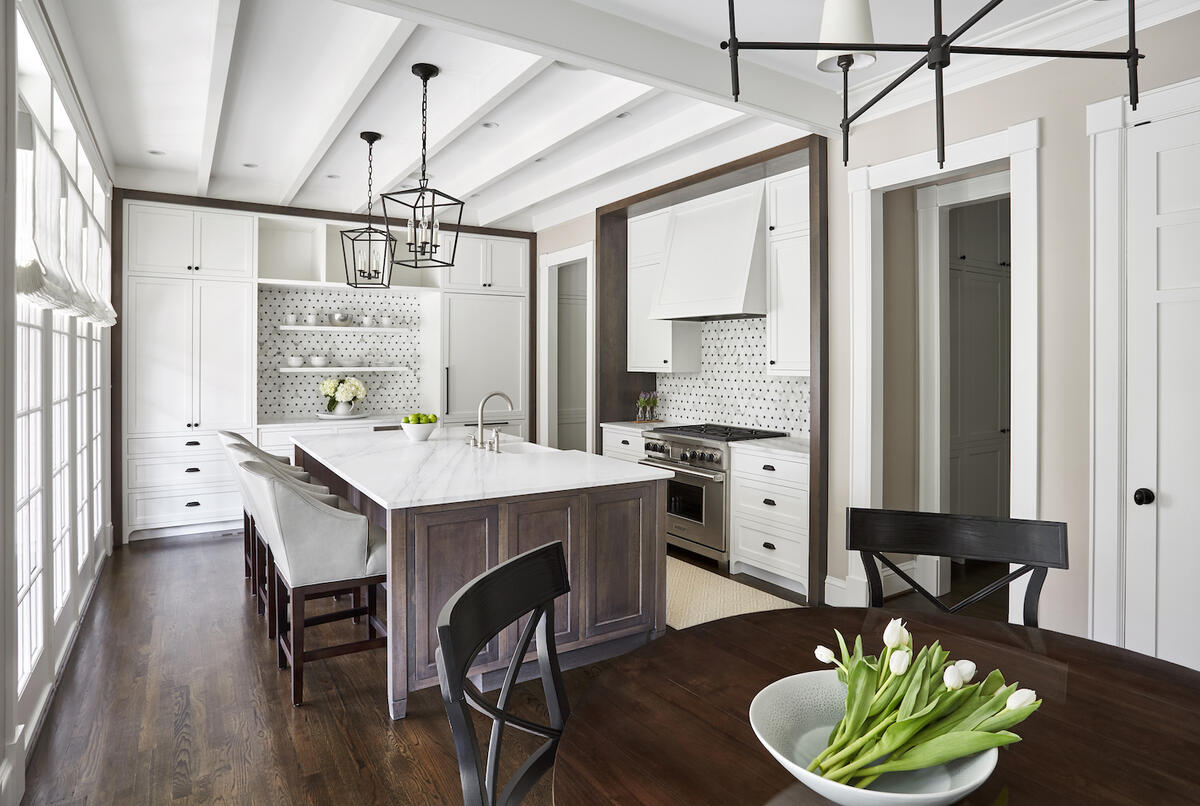
Do the rumblings of a potential recession make you nervous or make you look at your business differently?
I have been through two recessions, and typically they don’t happen exactly when or how you expect. I think you can stress yourself out over things you think are going to happen, but it is the things you never expect that broadside you. All I can do is keep the company tight processwise, keep as much money in the bank as I can and make sure I have reserves to be able to pay payroll and mortgages. You’ve just got to try and prepare for it, but you can’t fear it—because if you fear it, it will shut down any good energy that’s coming your way.
I will say that we are very fortunate to work with the top 1 percent [of wealthy clientele]. But I also work with plenty of what I call “normal” families—and gosh, there are lots of people still looking to have their first floor redone, or they want to refresh their main bedroom and bathroom.
When I ask designers what leveling up means to them, a lot of them tell me that it’s about pivoting to whole-home projects. But you still take those smaller jobs—the living room or the primary suite refreshes—even as your firm has grown. Why?
I think that’s one of the biggest things that designers miss—especially when there is the fear of an economic upheaval. You need to have filler projects to make payroll. Plus, the majority of the projects I take are four to five years long—so I’m building the house for two years, but I don’t typically buy the materials, so I’m not making money except on time and on furniture. We do purchase all of the furniture a year ahead of when the house is delivered, but if I’m on a four-year project, that’s two years in. I’ve still got two years where all I’m doing is making money on time, so I’d better come up with a way that I can make some good, quick money. Now, I’m not saying I’m going to take on just a powder room. But redoing somebody’s first floor—do not thumb your nose at that. That could easily be a solid commission. And if you do get into an economic downturn, that’s the money that’s going to cover your payroll.
The other thing I think principals of firms miss is that their employees need a chance to learn. How are they going to do that if all of the projects are 100 percent critical, and they’re constantly running triage? You’ve got to have smaller projects where you can slow down for a minute and have them learn. Maybe they’re not magazine-ready, but I use them as learning tools. And I have that conversation with the client on the phone during the interview—I will tell them, “Listen, I am typically dealing with large construction projects. You will always have me overseeing your project, but the rest of the team will be working with you on a daily basis.” So they understand how it works from the get-go and I am not bait-and-switching them.
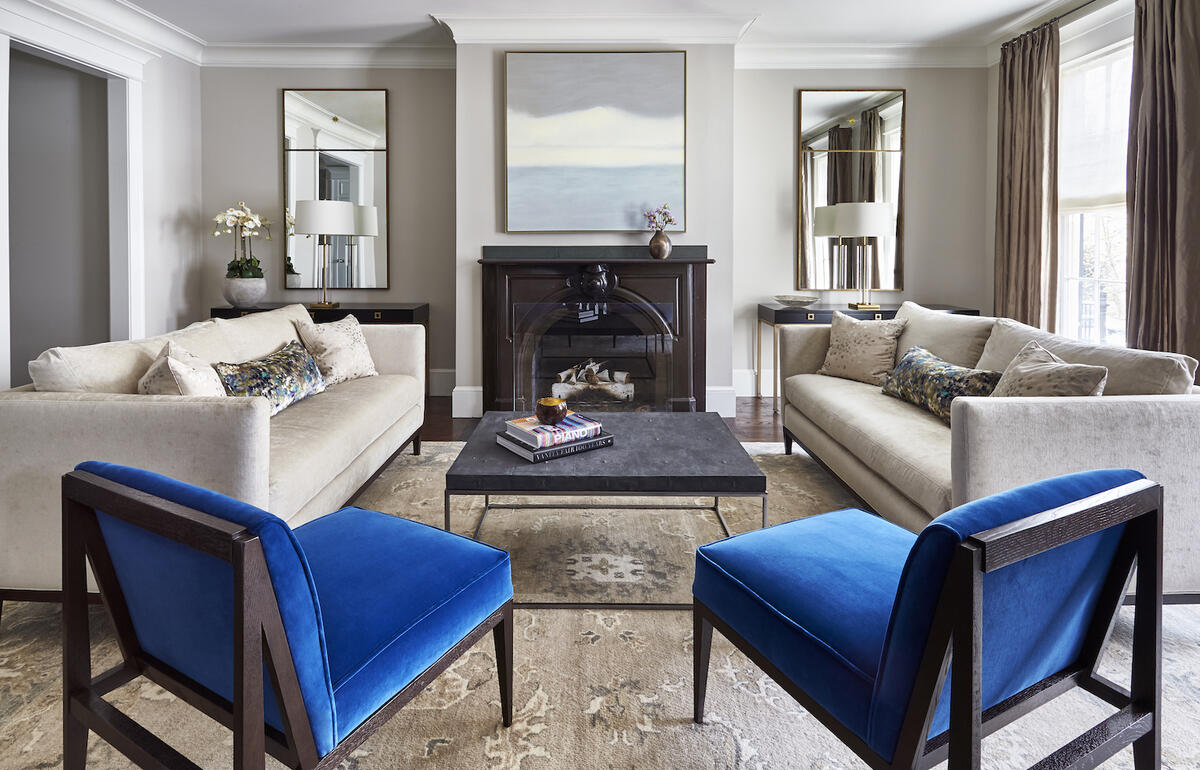
What is the biggest thing you wish you had known when you started your firm?
It all doesn’t have to be done yesterday. The stress that I put on myself—for what? I mean, my gosh, those emails do not have to be answered in less than five minutes. I am very intense and Type A when it comes to communicating, because I believe that helping people understand exactly what is happening with their project is very important for clients who are spending a lot of money. But I was staying up till midnight just trying to answer emails—and even my clients were telling me, “You don’t have to answer that right away.” I think if I could tell my younger self anything, I would say, “Breathe, kid. It’s OK. You’re going to get there.”
What does success look like to you today?
Success equals freedom for me. If I have clients who are happy, projects that I am proud of, and I’m able to take a walk with my sister on a Friday at 3 p.m. for an hour, I feel like I’ve won the lottery.
Homepage photo: Tracy Morris | Courtesy of Tracy Morris
To learn more about Tracy Morris, visit her website or find her on Instagram.





























